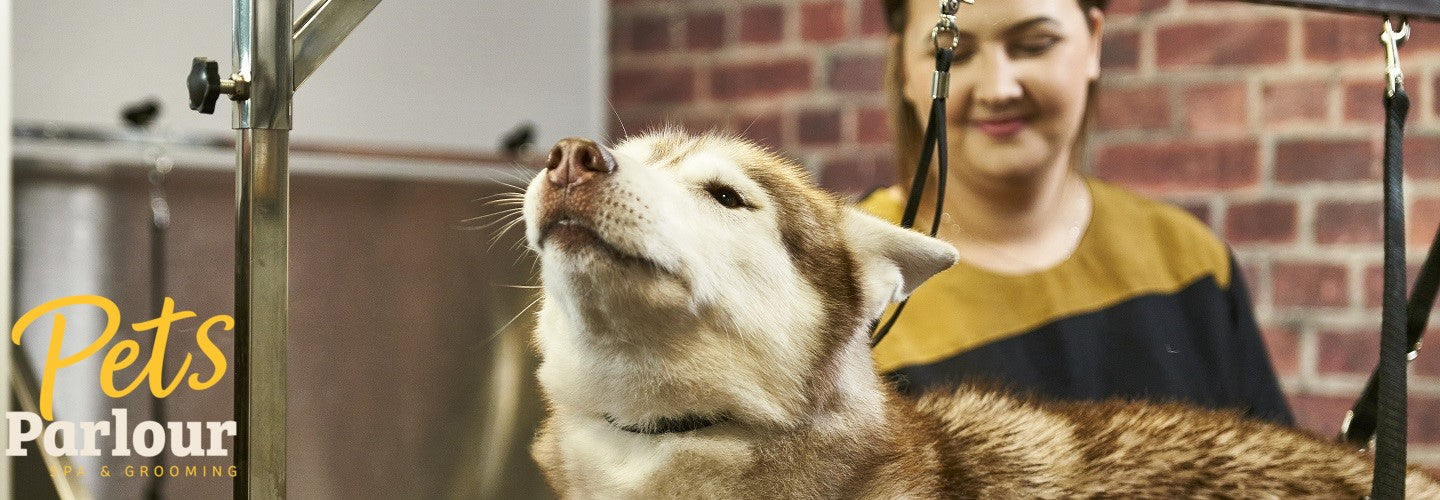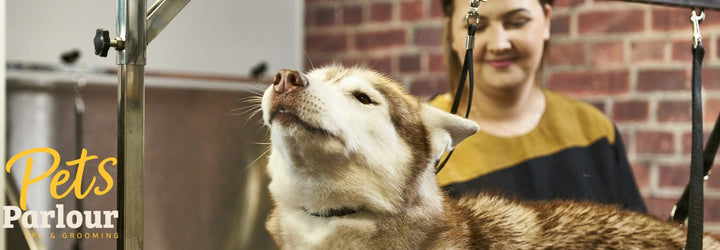

Posted by Emma Oldroyd, on
The Pets & Friends Guide to Dog Grooming
Investing in a grooming routine for your dog is essential to not only their coat health but can help your dog’s overall wellbeing. There are many elements to grooming your dog both at your local salon and at home, so we’ve pulled together some of your most frequently asked grooming questions for our fully trained experts to answer.
What grooming can I do at home?
Some grooming elements are easy to do at home and can even help create a bond between you and your dog from an early age.
Daily brushing will help keep your dog’s coat healthy, especially if they are a long-haired breed.
- Brush out all the coat
- Follow up with a comb to remove dead hair
- Brush well under the legs, belly and behind the ears (which are prone to matting)
If your dog is double coated, investing in a de-shedding tool will help keep their coat in good condition between grooms.
What about bathing my dog?
Not every dog dislikes bath time, and if you’re between grooms with a messy coat, a quick bath at home is always a great idea. You can also use doggy wipes to keep them fresh between grooms.
- Use dog friendly shampoo and conditioner
- Wipe in and around their ears daily
- Wipe below their eyes if you dog is prone to tear staining
- Always keep their bottom clean
If you’re unsure about grooming your dog at home, you can speak to our grooming experts about which products/treatments to use. Or you can book in at your local Pets Parlour spa and grooming salon to keep your dog looking and feeling their best.
What do groomers use for long-haired dogs?
Groomers will usually use the same shampoo on dogs regardless of their coat length. Unless your dog requires a shampoo with purpose such as flea shampoo or de-shedding shampoo, you can simply choose your favourite scent.
The main difference is the amount of conditioner used. Much like humans, longer hair requires more care and attention with conditioner, making your dog’s long coat easier to comb and help prevent matting.
What do groomers use to make dogs smell so good for so long?
The secret to a long-lasting scent is a good dog cologne! The Pets Parlour groomers use a range of fragrances which you get to choose.
Is a comb or brush better for long-haired dogs?
The answer is both, depending on the breed of your dog. We would recommend using a slicker brush for breaking down knots in your dog’s coat, followed by a comb through afterwards.
What is the best grooming tool for short-haired dogs?
A rubber massage pad is great for short-haired dogs, the rubber is soft on the skin and can gently pull on loose hairs as you brush. A slicker brush shouldn’t be used on short-haired dogs as they can burn or graze their skin.
Do dogs with short hair need to be brushed?
Yes! Regular brushing will help with shedding/malting, not only will this stop them from itching but will help stop their hair getting all over your house. Regular brushing can also help regulate their body temperature.
How do you groom a dog with sensitive skin?
We would always use a product specifically for sensitive skin such as argan oil dog shampoo and conditioner. This will help moisturise your dog’s skin. When using shampoo for sensitive dogs, always dilute according to the instructions to ensure that the right amount of product comes into contact with their skin.
Depending on the dog’s condition, we would advise to pat dry a dog with sensitive skin and avoid over brushing.
What do dog groomers use for fleas?
For fleas we always use a specialist flea shampoo. Always dilute appropriately and massage well into their coat and skin. For best results, we recommend leaving flea shampoo to sit for 5-10 minutes (or according to the shampoo instructions).
Remember, if your dog has had fleas, always spray your house and wash anything that your dog lays on regularly for 4 weeks to make sure you get rid of every flea.